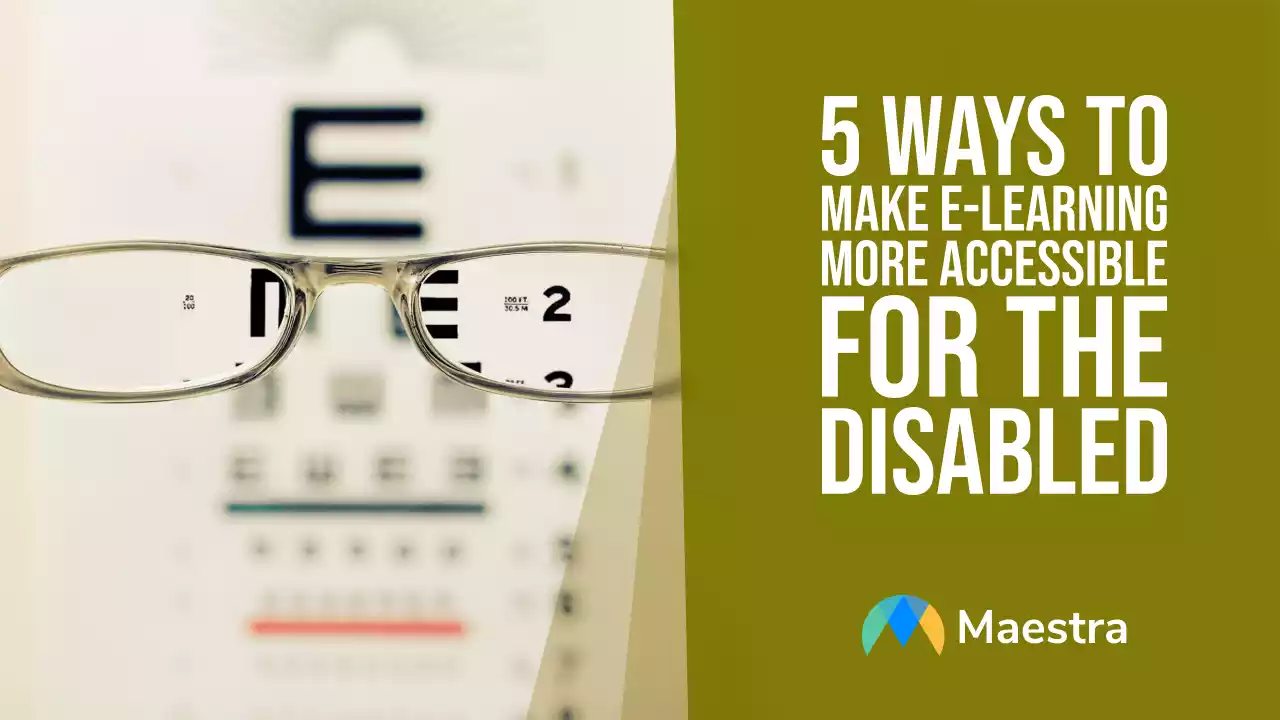5 Ways to Make eLearning More Accessible for the Disabled

Don’t Rely Solely On Color To Convey Information
Color is a powerful tool for designers. It can set the mood and draw attention to important information, but color isn't always reliable in eLearning. Therefore, it is important for designers to think twice about what they know about color while creating accessible content. Colorblind people don't see color the way you do, so using it to convey information can be confusing or even impossible for them. If you're designing an eLearning course that relies on color coding, choose an accessible color palette and consider using other visual cues. For example:- Use text labels alongside primary images rather than relying on the colors alone (e.g., red = stop; green = go)
- Use arrows or shapes pointing at parts of illustrations rather than just relying on their colors
- Use high contrast, as some people with visual impairments struggle to see the low color contrast
- Another graphic design tip is to Include enough white space and negative space so that important design elements stand out.
Focus On Improving Visual Content
One of the most important things you can do for your eLearning is to make sure it's accessible for people with all types of disabilities. This means that everyone can use it, regardless of their abilities. When creating content, you should focus on combining visual content with text. Visual elements include images, videos, and graphics—anything that isn't text. This includes audio as well. If a video plays automatically when someone opens your course, they'll be able to access it even if they cannot read the words on the screen. You can add a text transcription to make it easier for those with screen readers to enjoy your content. Animation is also a great addition to any course. Animated videos also require little reading and allow users who are visually impaired or blind to enjoy interactive experiences like clicking on buttons or playing games within eLearning courses without having any trouble following along with what's going on in each lesson.Add Alt Text
Alt text is an image's description. It is for screen readers and other assistive technologies, not for the user to read. Alt text should be descriptive and concise, but it should not include the file name of the image or a caption or title. This makes it easier for assistive technology to process the information and read it clearly to the user. Alt text is used by screen readers to describe images on a page. This can help blind users understand what they're looking at, even if they don't see it in person—and if you're designing a course that includes images, the alt text should be an essential part of your design process! Alt text is also handy for those who are deaf or hard of hearing, as they can read the content rather than listen to the audio.Design For Screen Readers
It’s important for eLearning courses to be accessible across all devices, including mobile devices and those using assistive technology like screen readers. Screen readers are software used by individuals with visual impairments to use computers. They read information aloud in a synthesized voice, making them ideal for users who struggle to read text on the screen. Since these tools have an audio component, it is critical that your course be designed in such a way that it can be understood by everyone. Here are some ways to ensure that your eLearning course is accessible:- Use headings, subheadings and bullet points so users will know what they will learn next (use lists where possible)
- Ensure that both your text content itself and the content across the page is laid out in a clear way
- Use plain language as much as possible and avoid jargon when writing content
- Build for use on the keyboard only; in other words, don’t require the use of a mouse or other tools that disabled people may not be able to use to navigate your site
